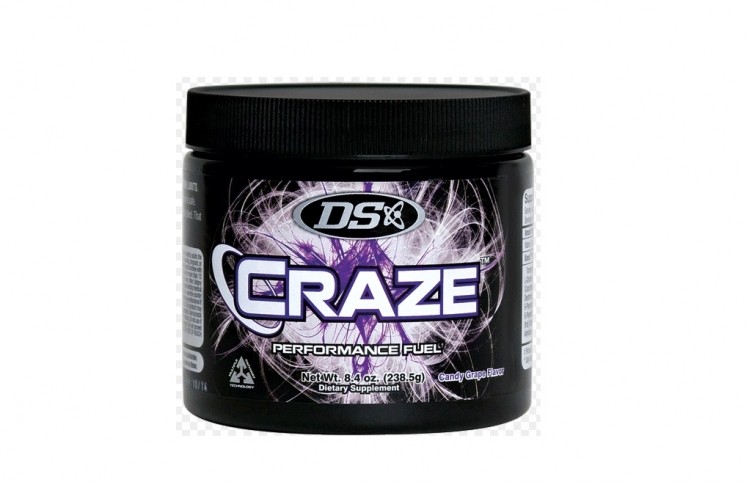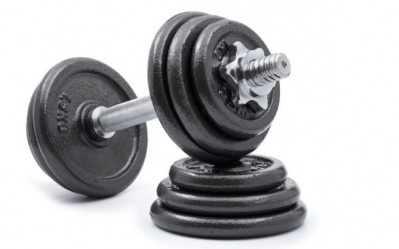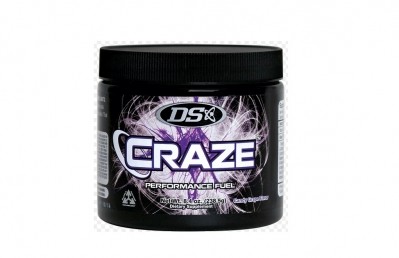Driven Sports ‘completing destruction’ of remaining Craze

The product has been in the mainstream headlines following the publication of scientific papers in Drug Testing and Analysis and the Journal of Analytical Toxicology that alleged that the product tested positive to a compound called N,alpha-diethylphenylethylamine (NADEPEA), also known as N-ethyl-1-phenyl-2-butylamine or ETH, reported to have possible amphetamine-like stimulant activity.
Despite disputing the findings of both studies, and funding a study of its own that found no NADEPEA, Driven Sports has decided to permanently remove Craze from the market.
‘Destroying any remain inventory’
In a statement on its website, Driven Sports said: “The results of [the] safety study [published in the International Journal of Medical Science by Kedia et al] and our 34 other tests showing that Driven Sports Craze does not contain NADEPEA contradict the media attempts to show a link of Craze to a methamphetamine-like substance. However Driven Sports loyal customers are our top priority, and although we disagree with the tests paid for by our competitors, we will not disregard them. Therefore, we stopped distributing Craze over six months ago and are completing destruction of any remaining inventory to which we have access.
“We do not believe that any legitimate Craze is available at any authorized retailer and urge consumers to exercise appropriate caution. We also want to remind consumers of our money back guarantee on our products, and that consumers can return Craze to the retailer you purchased it from for a full refund of the purchase price.”
“Driven Sports is dedicated to providing high quality products that are effective and safe.”
The Kedia et al. study, which was funded by Driven Sports, concluded that, “supplementation with MPP (Craze) was generally safe and well-tolerated”. The researchers, led by William Kedia from the Center for Applied Health Sciences, also reported that there were no serious adverse events, and that the product did not contain N, alpha-diethylphenylethylamine (NADEPEA), nor were there any significant increases in the liver enzymes of the participants.
“The study was conducted before the blasts of media attention on Craze and was subject to increased scrutiny after some articles were published,” said Driven Sports.
Multiple sources
The recent paper in the Journal of Analytical Toxicology by Mahmoud ElSohly, PhD, and Waseem Gul, PhD, tested a variety of dietary supplements for NADEPEA as well as phenylethylamine (PEA) and its N, N-diethyl derivative (NDP). The researchers acquired product from a number of sources, including such as bodybuilding.com, SupplementWarehouse.com, and GNC.
Results showed that, of the products analyzed, Craze powder allegedly did contain NADEPEA and some levels of PEA, but not NDP.
The study was sponsored by Thermolife, a direct competitor or Driven Sports.
Identification & quantification
Marc Ullman from law firm Ullman, Shapiro & Ullman LLP, which represents Driven Sports, challenged the findings. He told us: “There are two fundamental data quality measures that determine, in part, the reliability of a reported measurement; that being 1) proper identification of an analyte (i.e., specificity) and 2) reliable quantification of that analyte (i.e., data of known precision and accuracy). The article by ElSohly and Gul published in the Journal of Analytical Toxicology, as written, fails to meet either of these measures.”
In terms of identification, Ullman explained that there are three relevant constitutional isomers of diethyl-phenylethylamine for the purpose of ElSohly and Gul's investigation: 1) N,alpha, 2) N,beta and 3)N,N. “The N,alpha and N,beta isomers have very similar chromatographic characteristics, and are difficult to resolve unless the test method being used is optimized to properly separate these two isomers,” he said. “Elsohly and Gul completely ignore the N,beta isomer in their study. As such, the alleged presence of N,alpha may actually be N,beta or a mixture of the two isomers.
“The ICH Guidelines cited by ElSohly and Gul, states, in part, ‘An investigation of specificity should be conducted during the validation of identification tests,’ further ‘Suitable identification tests should be able to discriminate between compounds of closely related structures which are likely to be present’. ElSohly and Gul ignored the N,beta isomer which is critical to understanding the actual constituent(s) in the samples. This issue alone makes the results reported by ElSohly and Gul to be unreliable and unacceptable for publication,” he said.
For quantification, Ullman said that once an analyte has been shown to be properly identified, reliable quantitation of the analyte is essential. “Elsohly and Gul have conducted a method validation study addressing precision and accuracy of their method under pristine conditions, but have not implemented a quality control program, as published, for the actual supplement samples they analyzed to demonstrate the precision, accuracy, and reproducibility of their work,” he said.
“For example, there were no spikes or blanks analyzed to evaluate bias and accuracy, and no actual sample replicates analyzed to demonstrate precision. Since the accuracy and precision of data reported by ElSohly and Gul is unknown, again their results are unreliable and unacceptable for publication.
“These fundamental flaws in ElSohly’s work coupled with the source of his payments for this project certainly should call into question whether there was a predetermined outcome.”
‘We have no horse in this race’
In response, Dr Elsohly told NutraIngredients-USA: “The data speaks for itself. This is a very well-respected peer-reviewed journal. There is no question about our findings there.
“Regarding questions about this material being spiked into the products, the products we have actually come from different sources – some products sent to us by Thermolife, and some sent directly from the stores that retailed the product, and we acquired the products ourselves, both our company and via the University of Mississippi Natural Products Center. There are multiple sources and the data is consistent, consistent that the ETH is present in all these products. There was only one Craze product that came back negative but this variability doesn’t necessarily mean that it’s natural but it means it’s not a consistent process, it’s not a homogenous material, but nonetheless, the compound is there in significant quantities.
“We have no horse in this race,” he added.
Tip of the iceberg?
The ElSohly and Gul article also tested other dietary supplements, including Detonate from Gaspari Nutrition, which also allegedly tested positive to containing NADEPEA. Gaspari Nutrition was contacted for comment on December 16, 2013, but no comment has been received at the time of publication.
Reacting to the wider issue of alleged designer amphetamine-like stimulants appearing in supplements, Dr Amy Eichner, special advisor on drugs and supplements for the US Anti-Doping Agency (USADA), told us that the Agency’s fear is that this is just the tip of the iceberg.
“It is difficult if not impossible to know what is actually contained in these products, as many of these stimulants are not listed on the labels and athletes and other consumers need to be aware that there is a real risk that they may be unknowingly consuming powerful stimulants, which can not only expose athletes to potentially testing positive, but can pose serious health risks as well,” said Dr Eichner.
Sources: International Journal of Medical Science
2014, Volume 11, Number 2, Pages 116-126. doi:10.7150/ijms.7073
“Effects of a Pre-workout Supplement on Lean Mass, Muscular Performance, Subjective Workout Experience and Biomarkers of Safety”
Authors: A.W. Kedia, J.E. Hofheins, S.M. Habowski, A.A. Ferrando, M.D. Gothard, H.L. Lopez
Journal of Analytical Toxicology
doi:10.1093/jat/bkt097
“LC–MS-MS Analysis of Dietary Supplements for N-ethyl-a-ethyl-phenethylamine (ETH), N, N-diethylphenethylamine and Phenethylamine”
Authors: M.A. ElSohly, W. Gul
















